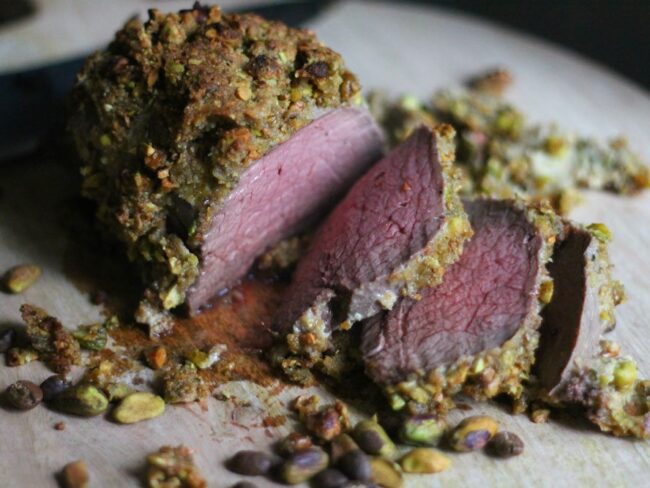It wasn’t always about the goats, admits Janet Smith.
When her grandmother Blanche Borgman started Borgman’s Dairy Farm in the Blue Springs area in 1935, the business was centered around cows. They were Grade A dairy farmers, and they also raised hogs and grew row crops. As the family expanded, so did the farm: Blanche’s seven children were all given a piece of land, and Smith fondly recalls childhood summers spent crisscrossing through pastures and cornfields to visit her cousins.
In the late 1970s, the Borgman’s farm was forcibly downsized when the state expropriated much of the land through eminent domain. There are just a few acres remaining at the original farmstead, bordering Lake Remembrance. It wasn’t enough for the Borgman family, and they moved operations further east, to the countryside in Holden, about 45 minutes outside of Kansas City. There was no leaving behind agriculture, Smith says.
When Smith and her husband, Randy, took over the farm from her father, Frank, in 2006, the first thing she considered was the sustainability of the business. That’s where the goats came in.
“I noticed there weren’t a lot of goat farms around, and I wanted to provide a product that was different,” she says.
She’s certainly succeeded there. Today, the Borgman’s Dairy Farm portfolio includes around 200 alpine goats and a range of unique dairy products from chevre and flavored blended cheeses to goat’s milk yogurt to miniature and full-sized sweet and savory cheesecakes. Borgman’s also makes a cajeta—a Mexican caramel similar to dulce de leche, but made with goat’s milk rather than cow’s milk—that has become a calling card.
“It took a long time to get that right,” Smith says. “Cajeta is not made throughout the United States because it’s challenging to make. There are lots of variables: temperature, pH. A lot of science goes into it.”
Science and, perhaps, a little magic—for that is certainly what you taste when you sample Borgman’s award-winning cajeta. There are few recipe ingredients: Smith filters goat milk and stirs it with cane sugar continually in large kettles for 16 hours at 220 degrees Fahrenheit, until it reduces into a thick, heavenly sauce; a dash of baking soda and salt are added at the finish, and then the cajeta is ready for jars and distribution. Any other caramel you might buy off a shelf in the grocery store will likely contain corn syrup, preservatives or butter. Smith eschews all those things, although she isn’t shy when it comes to experimenting with flavors: Her bourbon cajeta and the apple cajeta are crowd pleasers.
Borgman’s Dairy Farm is the only cajeta producer in the Midwest—another reason why Smith was keen to develop the recipe. Plus, she says, it lasts a long time: While traditional dairy offerings are not shelf-stable, cajeta distributes easily and can carry the business through the winter seasons. And it has endless uses.
“I love putting it on bread pudding or on pancakes,” she says. “It’s really delicious on pork, too—if you just brush it on while the pork has a few more minutes on the grill, it’s just fabulous.”
You can find Borgman’s Dairy Farm products—including the cajeta—at Johnson County Hen House locations, Whole Foods, various farmer’s markets. You can also order online through the Borgman’s Dairy Farm Facebook.
Related Posts
An Old-Time Holiday at Hermann Farm
Celebrate Christmas the German way at Hermann Farm.
Columbia Cherishes its Past
Columbia always has an eye on its future, but it cherishes the stories of its past. You can get an in-person glimpse of history at these Columbia locales.
Farm to Table with Wayne Vanderwert
Wayne Vanderwert took up cooking for a simple reason. "I like to eat," he says.



